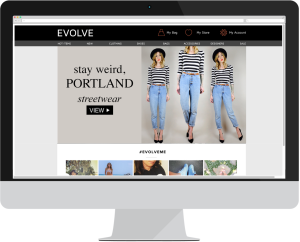Personalize Your Website for Anonymous Visitors w/ Geo
Most marketers already know that website personalization improves sales by an average of 20%.
 With a well placed cookie and a smart algorithm, you can take purchase history, page views and social graph data and serve up relevant content that improves conversion and makes happy customers.
With a well placed cookie and a smart algorithm, you can take purchase history, page views and social graph data and serve up relevant content that improves conversion and makes happy customers.
But what can do you before you have that rich profile data? Or what if you don’t have the resources to build your whole website around a personalization CMS?
Even if you don’t know who is visiting your site, you can always know where they are.
With location, you can build a very credible proxy for a customer profile without much effort.
There are two directions to tackle the anonymous visitor: targeting your calls to action and localizing your branding.
1. Target your offers by region
 Location can tell you a lot about which offer is most likely to resonate with an anonymous visitor.
Location can tell you a lot about which offer is most likely to resonate with an anonymous visitor.
Once you’ve identified which offer is best for each market, just geotarget those offers on your website, all based on the visitor’s reported location.
First, take a look at your historical sales and identify key trends, either state by state or DMA by DMA.
Take those trends and highlight the inventory or event that’s most likely to appeal to each market you serve.
Do sandals sell better in Florida than in Alaska? Do city dwellers buy different stuff than rural customers? Do state regulations change what people are buying? Do you have customer clusters such that it makes sense to run a localized marketing campaign?
If you don’t have time for in-depth analysis, even just applying some common sense will boost conversion: why would you tell your entire customer base about a promotion that’s only available at your Kansas City location?
In the right industry, it can make sense to go hyper-local and target prospects in their place of business. Examples might include geofencing military bases, school districts, hospitals or corporate campuses.
By putting more likely products in front of the customer, you’ll see anywhere from 5% to 25% improved conversions. You’re not stopping someone from Alaska buying your sandals, but you are making it more likely that they’ll find your battery-powered leg warmers and make the purchase.
2. Make sure your brand always looks local
 92% of Americans prefer to buy from local small businesses than from national chains.*
92% of Americans prefer to buy from local small businesses than from national chains.*
They like to deal with people like themselves and they believe that local businesses are more accountable; so brand-wise it makes sense to position yourself as a local.
With only one corporate website serving multiple markets, this can be tricky, but you can use geolocation data to swap out web content and at least appear local at a brand level.
This can be as simple as using localized scenery on your website and dynamically dropping in the name of the local city, to going as far as spoofing your outgoing phone calls with an area code that’s local to your prospect.
For companies that actually do have some kind of local presence, the national website should emphasize that fact. Make your national site look like it’s dedicated to that one location: If you sponsor local sports teams, host special events or have a community investment fund, highlight each spend by geofencing the community where it happened and putting that content front and center on your website.
Work with what you’ve got
The advantage of geo-responsive marketing is that it can be as broad or detailed as you have time and resources for.
If your West coast customers behave differently than your East coast customers, just create two big geofences. If you know that 80% of your sales come from a handful of zip codes, then go deep and give those people a custom experience.
Once you’ve converted that anonymous visitor into a customer with a profile, then by all means personalize your offering to the nth degree, but never stop thinking about how to personalize for that 95% of people visiting your site who are just searching for a reason to convert — if you can put the right offer in front of them.
CloudEngage can help with a free Accelerator Action Plan to see where geo-responsive marketing can help your conversion rate.
Learn more
Related Articles
CBT News: Dealership geo-fence marketing
Location, location, location! It is usually the difference between a shopper looking for an off road capable 4×4 or a city dweller in need of an eco-friendly Nissan Leaf.
CloudEngage Acquires AnswerDash, Leader in AI powered Self-Service Support
We’re thrilled to announce that we’ve acquired Seattle-based AnswerDash, expanding our suite of offerings to Include AI powered self-service support SPOKANE, Wash., AND SEATTLE, Wash., June 23rd, 2020. Our entire team recognized the fit with AnswerDash was terrific....
CloudEngage Acquires AnswerDash, Leader in AI powered Self-Service Support
We’re thrilled to announce that we’ve acquired Seattle-based AnswerDash, expanding our suite of offerings to Include AI powered self-service support SPOKANE, Wash., AND SEATTLE, Wash., June 23rd, 2020. Our entire team recognized the fit with AnswerDash was terrific....
Subscribe & Follow
Join Our Newsletter
Subscribe to our email list for news and offers. Follow us on social media.
Subscription
"*" indicates required fields
